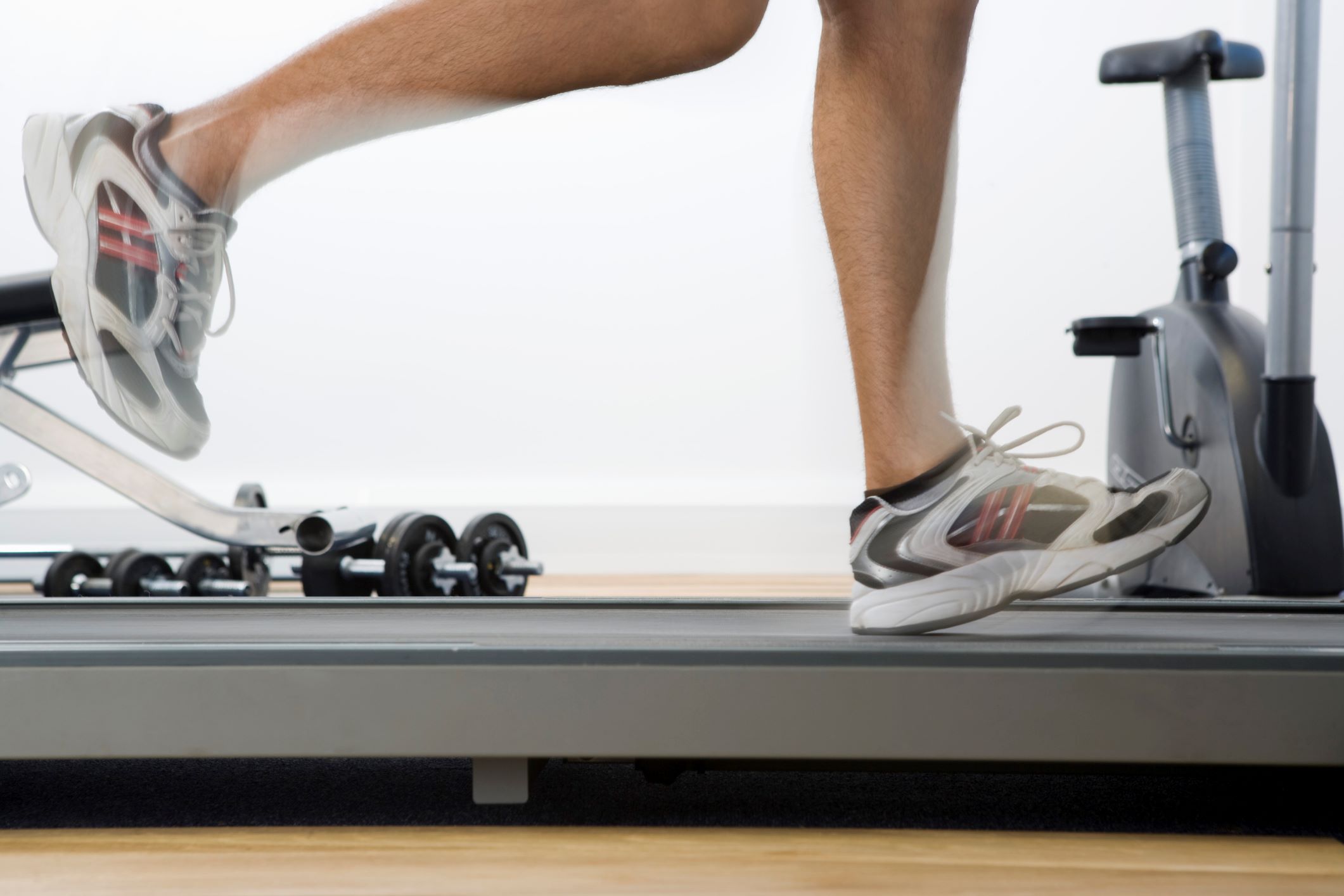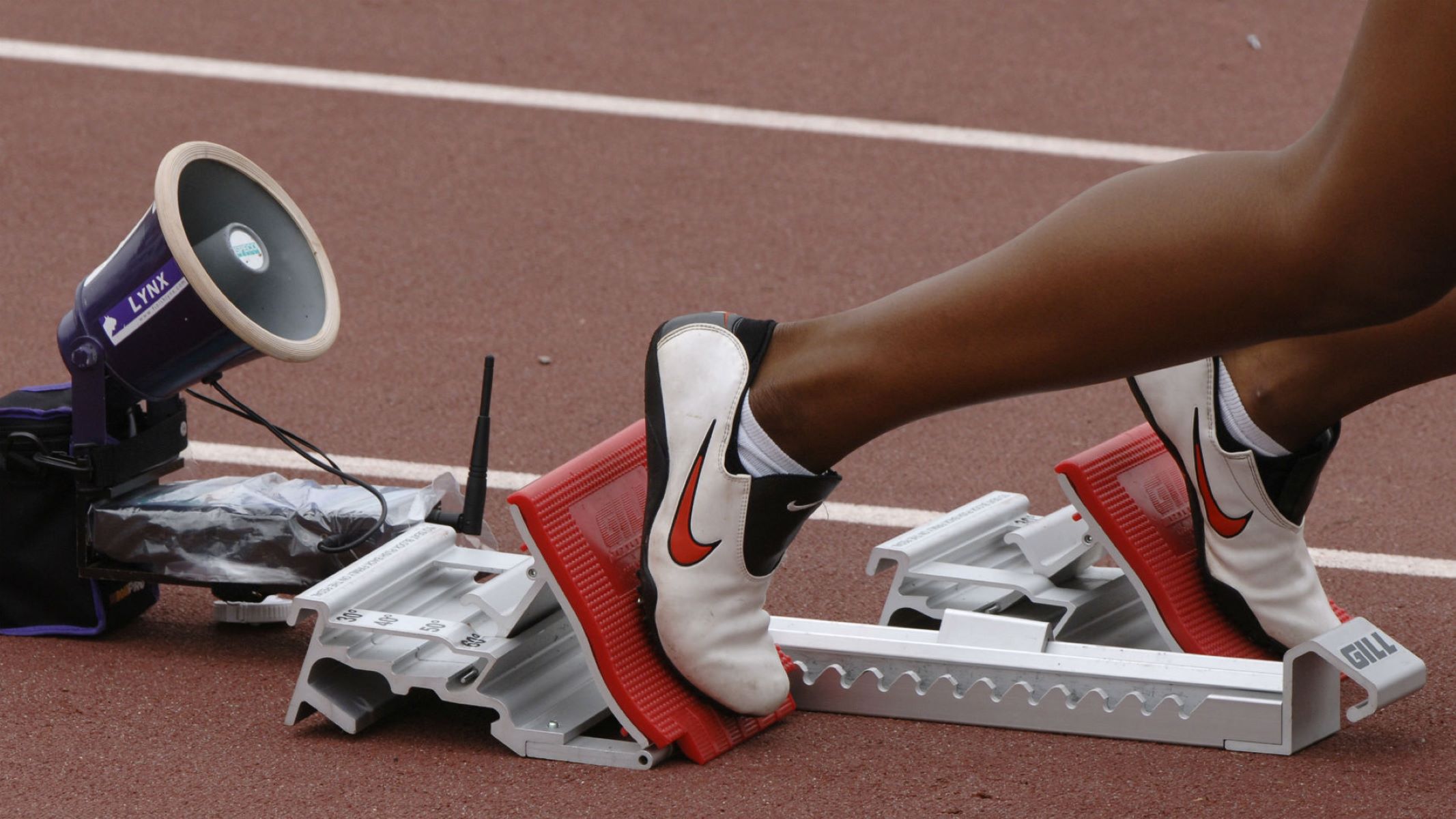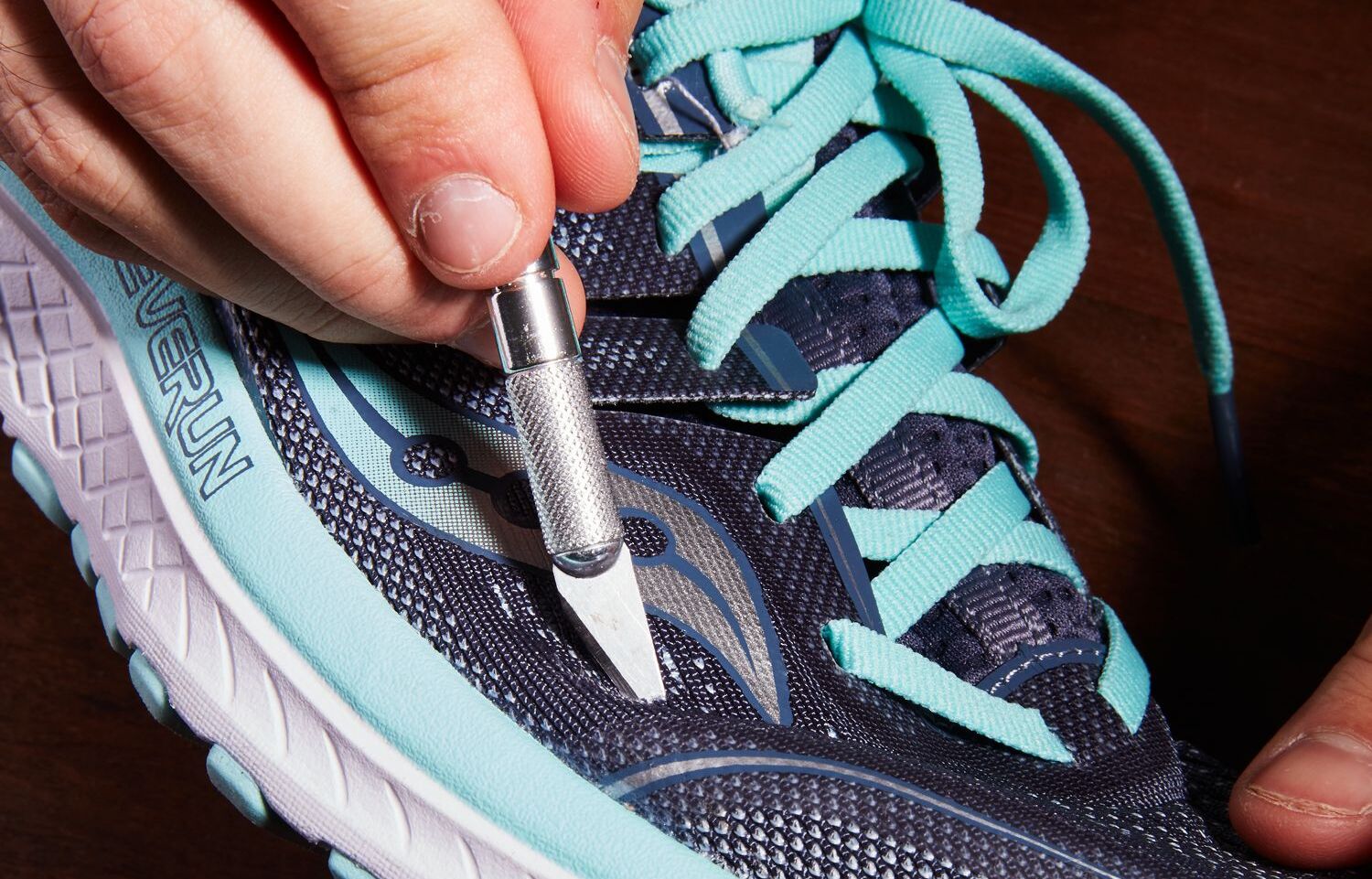

Featured
How To Fix Poor Running Form
Modified: January 22, 2024
Improve your running form with these featured tips. Fix poor posture and technique for better performance and injury prevention.
Introduction
Running is not only a great way to stay fit and improve cardiovascular health, but it can also be a highly enjoyable activity. However, many runners find themselves struggling with poor running form, which can lead to inefficiency, discomfort, and even injuries.
Having proper running form is key to maximizing performance and minimizing the risk of injuries. It involves maintaining a balanced posture, engaging the correct muscles, and optimizing your stride length and cadence. By improving your running form, you can become a more efficient and injury-resistant runner.
In this article, we will explore the importance of proper running form and guide you on how to fix any issues you may have. We will discuss common mistakes in running form, provide techniques to assess your current technique, and offer tips and exercises to correct and strengthen your form. Whether you are a beginner or experienced runner, this article will help you enhance your running experience.
So, if you are ready to take your running to the next level, let’s dive into understanding the importance of proper running form.
Understanding the Importance of Proper Running Form
Proper running form is crucial for several reasons. Firstly, it helps to increase your running efficiency. When you have good form, you can make the most out of each stride, allowing you to cover more distance with less effort. This means you can run faster and run longer without feeling as fatigued.
Secondly, proper running form helps to prevent injuries. When you have improper form, you put unnecessary stress on certain muscles and joints, increasing the risk of overuse injuries such as shin splints, knee pain, and IT band syndrome. By adopting correct form, you can distribute the impact of each step more evenly, reducing the strain on specific areas of the body.
Furthermore, good running form can enhance your overall running experience. It can make your runs feel smoother and more comfortable, allowing you to enjoy the activity rather than feeling muscle tension or joint pain. Running with proper form can also improve your body awareness, helping you to better listen to your body’s signals and adjust your pace or technique when needed.
Proper form also plays a role in optimizing running economy. Running economy refers to the amount of oxygen consumed at a given pace. When your form is aligned correctly, you can improve your oxygen utilization, meaning you can maintain a faster pace for longer periods of time.
Finally, having proper form can help you reach your running goals. Whether you are aiming to run a marathon, increase your speed, or simply enjoy running without discomfort, focusing on your form is an essential component of your progress. By refining your technique, you can unlock your full running potential and take your performance to the next level.
In summary, proper running form is vital for enhancing running efficiency, preventing injuries, enhancing your overall running experience, optimizing running economy, and achieving your running goals. Now that we understand the importance of proper form, let’s explore some common mistakes in running form and how to correct them.
Common Mistakes in Running Form
When it comes to running, even small form errors can have a big impact on your performance and risk of injury. It’s important to be aware of common mistakes in running form so that you can identify and correct them. Here are some of the most common errors to watch out for:
- Overstriding: One of the most prevalent form mistakes is overstriding, where your stride is too long. This can lead to excessive impact forces and increase the risk of injuries such as shin splints and stress fractures. To correct this, aim for a shorter, quicker stride that allows your foot to land beneath your body instead of in front of it.
- Slouching Posture: Poor posture can negatively affect your running form. Slouching can cause inefficient breathing, reduced oxygen intake, and unnecessary strain on the muscles and joints. Focus on maintaining an upright posture, with your head over your shoulders and your core engaged.
- Lack of Arm Swing: Neglecting the movement of your arms can impair your overall running form. Your arms play a crucial role in maintaining balance and generating momentum. Keep your elbows bent at approximately 90 degrees and let your arms swing naturally in sync with your stride.
- Excessive Heel Striking: Landing on your heel with each step can increase the impact and stress on your joints. Aim to land midfoot or forefoot, allowing for a softer and more efficient stride. This can help reduce the risk of knee and ankle injuries.
- Inadequate Cadence: Cadence refers to the number of steps you take per minute. Low cadence can lead to overstriding and increased ground reaction forces. Aim for a cadence of around 180 steps per minute, as this has been shown to promote better running form and reduce the risk of injuries.
- Tensed and Restricted Upper Body: Holding excessive tension in your upper body can waste energy and affect your overall efficiency. Relax your shoulders, keep your arms and hands relaxed, and avoid unnecessary upper body movements to ensure a fluid running motion.
- Poor Foot Placement: Incorrect foot placement can affect your stability and increase the risk of injuries. Ensure that your feet are landing directly beneath your body, not crossing over each other or splaying out to the sides.
Now that you are aware of these common mistakes, it’s time to assess your current running technique and make the necessary adjustments. In the next section, we will guide you on how to evaluate your form and provide tips and techniques to fix any issues.
Assessing Your Current Running Technique
Before you can start improving your running form, it’s essential to assess your current technique. This will help you identify any areas of weakness or form errors that you need to address. Here are some methods to assess your running form:
- Video Analysis: Recording yourself while running can provide valuable insight into your form. Set up a camera or use a smartphone to capture your running from different angles. Analyze your video to check for any form errors such as overstriding, slouching posture, or improper arm movement. Compare your form to that of experienced runners or seek guidance from a running coach or expert.
- Self-Evaluation: Pay close attention to how your body feels during your runs. Notice any discomfort, muscle imbalances, or areas of weakness. Focus on the key components of good form, such as your posture, arm swing, cadence, and foot placement. Consider enlisting the help of a running partner who can observe and provide feedback on your form.
- Professional Gait Analysis: A gait analysis performed by a healthcare professional or running specialist can provide a detailed assessment of your running technique. They will analyze your body’s movement patterns, muscle imbalances, and any deficiencies in your form. Based on the analysis, they can offer recommendations and exercises to correct and improve your running form.
Once you have assessed your running technique and identified specific areas for improvement, it’s time to focus on correcting any form errors and developing better habits. In the next section, we will provide you with tips and techniques to help you run with proper form.
Tips and Techniques for Correcting Poor Running Form
If you have identified areas of poor running form, don’t worry – there are several tips and techniques you can implement to correct them. Here are some strategies to help you improve your running form:
- Focus on Posture: Ensure that your body is properly aligned while running. Keep your head up, shoulders relaxed, and core engaged. Imagine a string pulling you up from the crown of your head, maintaining an upright posture throughout your run.
- Work on Stride Length and Cadence: Aim for a shorter stride length to prevent overstriding and reduce impact forces. Increase your cadence to around 180 steps per minute by taking quicker, shorter strides. This will promote a more efficient and balanced running form.
- Prioritize Foot Placement: Focus on landing midfoot or forefoot instead of on your heels. This promotes a more efficient stride and reduces the risk of injury. Imagine a soft landing, rolling through your foot from heel to toe.
- Engage Your Core: A strong core helps stabilize your body and maintain proper alignment while running. Incorporate core-strengthening exercises into your routine, such as planks, Russian twists, or Pilates exercises, to develop a strong core and improve your overall running form.
- Practice Arm Movement: Pay attention to your arm swing while running. Your arms should be relaxed and bent at approximately 90 degrees. Focus on driving your elbows backward and allowing your arms to swing naturally in sync with your stride. This will help maintain balance and generate forward momentum.
- Gradually Increase Mileage and Intensity: As you work on improving your form, it’s important to slowly increase your mileage and intensity. Give your body time to adjust to the changes and avoid overloading your muscles and joints. Gradually increase your distance and speed to allow for a smoother transition.
- Practice Mindful Running: Be present and mindful during your runs. Pay attention to your body and how it feels while running. Listen to the feedback your body provides and make necessary adjustments to maintain proper form. This can help prevent you from slipping back into old habits and reinforce good running form.
Implementing these tips and techniques may require patience and practice. It’s essential to focus on one aspect at a time and gradually integrate it into your running routine. Over time, these changes will become second nature, and you will notice significant improvements in your running form.
In the next section, we will explore specific strengthening exercises that can enhance your running form and prevent injuries.
Strengthening Exercises for Better Running Form
Strengthening exercises are an important aspect of improving your running form. They can help develop the muscles necessary for maintaining proper alignment and increasing overall running efficiency. Here are some key exercises to incorporate into your training routine:
- Core Exercises: A strong core provides stability and helps maintain good posture while running. Include exercises such as planks, Russian twists, and bicycle crunches to target your abs, obliques, and lower back.
- Glute Bridges: Strong glute muscles play a crucial role in running form and power. Lie on your back with your knees bent and feet flat on the ground. Lift your hips off the floor, engaging your glutes and core. Hold for a few seconds before lowering down. Repeat for several repetitions.
- Single-Leg Squats: Single-leg squats, or pistol squats, help improve stability, balance, and leg strength. Stand on one leg with the other leg extended in front of you. Slowly lower into a squat position, keeping your knee aligned with your toes. Push back up to a standing position. Repeat on the other leg.
- Resistance Band Exercises: Incorporate resistance band exercises to target various muscles involved in running. Side leg lifts, clamshells, and monster walks with a resistance band can help strengthen the hip abductors and external rotators, which are important for hip stability and proper running form.
- Calf Raises: Strong calf muscles provide power for push-off while running. Stand on the edge of a step or a stable surface with your heels hanging off. Rise up onto your toes, then slowly lower your heels back down. Repeat for several repetitions.
- Lunges: Lunges strengthen the quads, hamstrings, and glutes, helping to improve overall leg strength and stability. Step forward with one foot and lower your body until both knees are bent at a 90-degree angle. Push through your front foot to return to the starting position. Repeat on the other leg.
- Upper Body Strength Exercises: While running primarily involves the lower body, having a strong upper body can help maintain proper form and arm swing. Include exercises such as push-ups, shoulder presses, and rows to strengthen your chest, shoulders, and back.
Incorporate these strengthening exercises into your training routine two to three times a week. Start with a few repetitions and gradually increase the difficulty and intensity over time. As your muscles strengthen, you’ll notice an improvement in your running form and overall performance.
In the next section, we will discuss how to incorporate proper form into your regular training routine and maintain good form during your runs.
Incorporating Proper Form into Your Training Routine
Now that you have learned about the importance of proper running form and techniques to correct any form errors, it’s time to integrate good form into your regular training routine. Here are some tips to help you incorporate proper form into your running workouts:
- Start Slowly: If you have been running with poor form for a while, it’s important to be patient and start slowly. Gradually introduce the changes in your form, focusing on one aspect at a time. Allow your body time to adjust and develop the new muscle memory required for proper form.
- Focus on Form Drills: Include specific form drills in your warm-up routine or as part of your regular training sessions. These drills, such as high knees, butt kicks, and skipping, help reinforce proper form and improve your running mechanics. Practice these drills regularly to develop muscle memory and improve your overall form.
- Use Visualization Techniques: Before and during your runs, visualize yourself running with perfect form. Imagine a smooth and efficient stride, a relaxed upper body, and a strong core. Visualizing yourself running with good form can help reinforce the correct movement patterns and improve your overall technique.
- Work on Breathing: Proper breathing technique is essential for maintaining good form and preventing unnecessary tension in your body. Focus on taking deep breaths, inhaling through your nose and exhaling through your mouth. This will help oxygenate your muscles and keep you relaxed during your runs.
- Take Regular Form Check-ins: During your runs, periodically check in on your form. Pay attention to your posture, arm swing, foot placement, and cadence. Make any necessary adjustments to maintain proper form. Regularly reinforcing good form habits will help solidify the changes and make them automatic.
- Seek Professional Guidance: Consider working with a running coach or expert to fine-tune your form. They can provide personalized feedback and guidance to help you improve your running technique. Their expertise can be invaluable in addressing specific form issues and ensuring that you are on the right track.
By consistently focusing on integrating proper form into your training routine, you will gradually develop a more efficient and biomechanically sound running style. Keep in mind that form improvement is a continuous process and may take time. Be patient and persistent, and celebrate the progress you make along the way.
In the final section, we will discuss the importance of avoiding injuries and maintaining good form in the long term.
Avoiding Injuries and Maintaining Good Form
One of the key benefits of maintaining good form is the prevention of running-related injuries. By practicing proper running form, you can reduce the risk of strains, sprains, and overuse injuries. Here are some tips to help you avoid injuries and maintain good form:
- Listen to Your Body: Pay attention to any pain, discomfort, or signs of fatigue during your runs. Running through pain or ignoring warning signs can lead to further injury. If you experience persistent pain or discomfort, take rest days as needed and seek medical attention if necessary.
- Gradually Increase Mileage and Intensity: Avoid sudden increases in mileage or intensity, as this can put stress on your body and increase the risk of injury. Gradually progress your training to allow your muscles, tendons, and bones to adapt to the demands of running.
- Include Rest and Recovery: Rest and recovery days are crucial for allowing your body to repair and regenerate. Use these days to focus on stretching, foam rolling, and other recovery techniques to help prevent muscle imbalances and maintain good form.
- Cross-Train: Incorporate cross-training activities such as cycling, swimming, or strength training into your routine. This helps to strengthen different muscle groups, improve overall fitness, and reduce the risk of overuse injuries.
- Address Muscle Imbalances: Imbalances between muscle groups can affect your running form and increase the risk of injury. Identify any imbalances and incorporate exercises that target weaker muscle groups to correct them. This can help improve your overall form and prevent overuse injuries.
- Regularly Assess and Adjust: Continuously assess your form and make necessary adjustments as needed. Form can deteriorate over time, so regular check-ins and form cues can help you maintain good technique.
- Seek Professional Help: If you have ongoing issues with form or recurring injuries, consider seeking the guidance of a running coach, physical therapist, or sports medicine professional. They can provide a thorough evaluation, recommend specific exercises or therapies, and offer personalized advice to address your unique needs.
Remember, maintaining good form is an ongoing process that requires attention and effort. By implementing these strategies, you can reduce the risk of injuries and enjoy running with improved efficiency and comfort.
Now that you have learned about the importance of good form and how to avoid injuries, you are equipped to continue your running journey with confidence and a focus on maintaining proper form.
Conclusion
Having proper running form is essential for maximizing performance, preventing injuries, and enjoying a smooth and efficient running experience. By understanding the importance of proper form and addressing any form errors, you can become a more efficient and injury-resistant runner.
In this article, we explored the significance of good form and the most common mistakes runners make. We provided techniques for assessing your current running technique, as well as tips and exercises to correct and strengthen your form. By incorporating proper form into your training routine, you can enhance your running efficiency, reduce the risk of injuries, and improve your overall running experience.
Remember, it’s crucial to start slowly, focus on one aspect at a time, and be patient with the process. Regular practice, mindful running, and seeking professional guidance can help you make progress and maintain proper form in the long term.
In addition to improving your running efficiency and reducing the risk of injuries, proper running form will allow you to reach your running goals and enjoy the many benefits that running has to offer. So, lace up your running shoes, pay attention to your form, and strive to become the best runner you can be.
Happy running!









